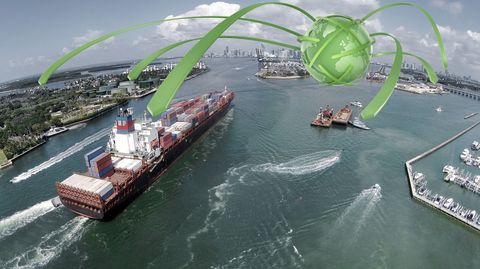In recent history, the nations of Africa have not been known as international trading powerhouses - but a new free trade pact that is currently in the works could represent an important step towards changing that.
Representatives of the various African states have been in discussion for a number of years about the planned establishment of the Continental Free Trade Area (CFTA), a single continental market for goods and services, which would improve trade links between 54 member states and significantly bolster the region's economic power.
Initially adopted in 2012, the plan is yet to come to fruition five years later, but efforts to make CFTA a reality remain ongoing, indicating that an agreement could yet be put in place in the foreseeable future.
Background to the agreement
The decision to establish the CFTA was agreed upon at the 18th Ordinary Session of the Assembly of Heads of State and Government of the African Union in Ethiopia back in January 2012, with the aim of bolstering trade activity and shoring up the region's business clout.
At present, intracontinental trade makes up only around 15 per cent of the total value of African trade, which is substantially lower than the equivalent for most other regional blocs. Given that the 54 nations that would be part of CFTA can boast a total population of more than one billion and a combined GDP exceeding $3.4 trillion (€3.02 trillion), it is clear that this constitutes an underutilized market.
CFTA negotiations formally commenced in Johannesburg in June 2015, and a number of meetings have been held to discuss and finalize the terms of the agreement, but a significant amount of work still needs to be done if the participating countries are to achieve their goal of having a deal in place before the end of 2017.
The objectives of CFTA
The main purpose of the CFTA project will be to create a single continental market for goods and services spanning the African continent, allowing free movement of investments and people with business interests. Such a development would help to accelerate concurrent plans to establish a customs union, which would further help to reduce barriers to trade.
Better coordination of trade liberalization and facilitation regimes and instruments would also be high on the agenda, alongside moves to expedite regional and continental integration processes, primarily by tackling the various challenges associated with different countries being members of multiple overlapping unions.
Finally, CFTA will aim to enhance industry competitiveness by taking maximum advantage of the available opportunities for scale production, continental market access and better reallocation of resources, resulting in broad-ranging benefits.
It is expected that the benefits unlocked by CFTA will go hand-in-hand with the separate region-wide Action Plan on Boosting Intra-African Trade, an ongoing project that has targeted a doubling of intra-African trade flows between January 2012 and January 2022.
Current progress
Negotiations for the establishment of the CFTA were officially launched in June 2015, with the stated aim of reaching a final agreement by 2017. Although it is not yet known whether this target will be met, concrete progress continues to be made.
Between June 2015 and June 2017, the Continental Free Trade Area Negotiating Forum (CFTA-NF) has held six meetings discussing draft modalities for negotiations on tariff liberalization and trade in services, while the CFTA Technical Working Groups held their first meeting in February to create an overview of the draft legal text and appendices.
At the most recent CFTA-NF meeting earlier this month, for example, it was agreed that 90 per cent of tariff lines for goods will be liberalized, with areas of focus regulating trade in services also discussed. Although further work is still needed to establish the new tariff schedules and exclusions, as well as to devise a strategy for approaching rules of origin, trade remedies, customs cooperation and trade facilitation, talks continue to move forward.
Additional rounds of negotiation have been scheduled before the end of the year, so organizations with business interests in the African region will be hoping that further progress can be achieved, and that CFTA can become a reality in 2017 as originally planned.






